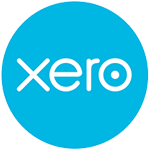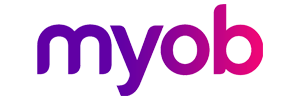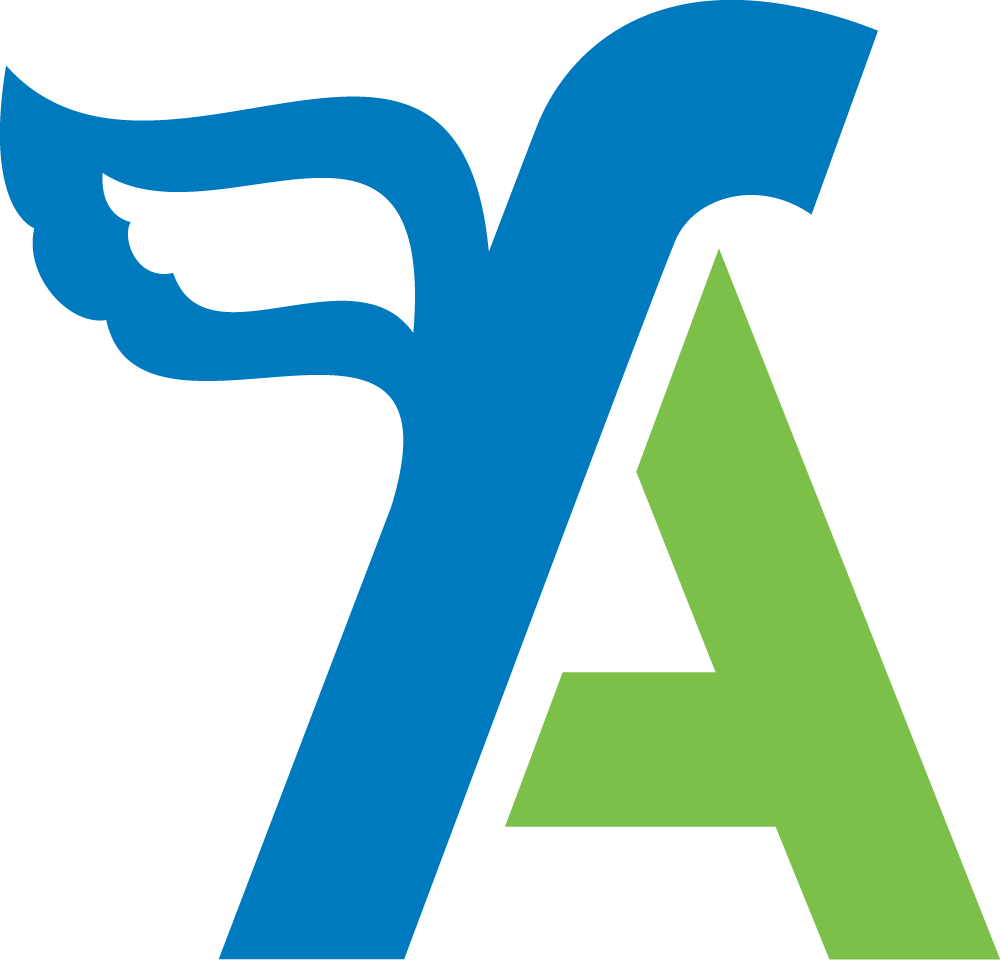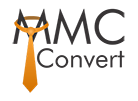- Home
- Convert To
We can migrate any number of historical years, both single and multi currency entities, customized Chart of Accounts.
This is a full transactional conversion wherein we bring Chart of Accounts, Contact Master, Item Master, Opening Trial Balance, Invoices, Bills, Bank Transactions and Manual Journals.
Xero
Convert historical data from almost any accounting software to Xero
List of Software which we can migrate to Xero
 AUSTRALIA (To change the region, please select region from top right section region drop down)
AUSTRALIA (To change the region, please select region from top right section region drop down) Convert from MYOB
Convert from MYOB Convert from MYOB Essentials
Convert from MYOB Essentials Convert from QBO
Convert from QBO Convert from Reckon (Desktop)
Convert from Reckon (Desktop) Convert from Cash Flow
Convert from Cash Flow Convert from Sage One
Convert from Sage One Convert from BankLink
Convert from BankLink Convert from Reckon One (Online)
Convert from Reckon One (Online) Convert from Reckon Home & Business
Convert from Reckon Home & Business Convert from FreshBooks
Convert from FreshBooks Convert from AccountAbility
Convert from AccountAbility Convert from PS Cash Book Plus
Convert from PS Cash Book Plus Convert from Exact
Convert from Exact Convert from Indinero
Convert from Indinero Convert from Gnu Cash
Convert from Gnu Cash Convert from Xero
Convert from Xero Convert from Saasu
Convert from Saasu Convert from Any Other Software
Convert from Any Other Software
QBO
Convert historical data from almost any accounting software to QBO

MYOB Business
Convert historical data from almost any accounting software to MYOB Business

Reckon
Convert historical data from almost any accounting software to Reckon

FreshBooks
Convert historical data from almost any accounting software to FreshBooks

FreeAgent
Convert historical data from almost any accounting software to FreeAgent

ClearBooks
Convert historical data from almost any accounting software to ClearBooks
- FAQ
MYOB
FreeAgent
List of Software which we can migrate to FreeAgent
FreshBooks
Xero
QBO
ClearBooks
- Order
- Team
- Career
- Contact Us
- Get a Quote
- Convert PDF Statement
- Test Migration
- Region
FAQ - MYOB Business
Home FAQ - MYOB BusinessXero to MYOB Business
- Chart of Accounts
- Customer Details
- Supplier Details
- Opening Account Balances
- Aged Receivables
- Aged Payables
- ‘Tracking Category’ in Xero is converted to ‘Jobs’ in MYOB Business.
- Bank Transactions (Includes Invoice payments, Bill payments, and other Bank Transactions)
- Credit Card Transactions
- Invoices and Customer Return Detailed
- Bills and Supplier Return Detailed
- General Journals
- Employee setup (Personal and Contact details, Tax file number, Employment status, Pay-rate/Salary, Bank account details, Super fund details, Pay items and earnings,deductions)
- Inactive Contacts/Accounts can be brought over on special request
- The entire conversion and matching of Reports are done on ACCRUAL Basis.
- Allocation of Invoices or Bills against Customer or Supplier returns respectively
- We make our best attempt to give you the exact image of your Xero data, however, due to the limitations of a few fields which are different in Xero and MYOB Business, we might have to use a few workarounds to bring the transactions
- Expense Claims
- Tracked Inventory
- Payment Terms
- Deleted/Void Transactions
- Transaction lines with Nil Values
- Individual Pay Runs for the conversion period
- Sales Rep
- Projects
- Notes in Contacts, Invoice/Customer Returns, Bills/Supplier Returns.
- Attachments is a different module and can be brought across as a chargeable service
- Quotes/Purchase order are brought across as a chargeable service
- Recurring Transactions are brought across as a chargeable service
- Unreconciled Transaction appearing on dashboard
- Fixed Assets
- We can only bring ‘One Tracking Category’ in Xero as ‘Jobs’ in MYOB Business.The ‘Second Tracking Category’ is ignored
- In Employee setup, we do not bring Employee Leave Entitlements
- In Employee setup, we do not bring Opening Balances
- We are specialists in converting core financial information and we try our best to bring the other non-financial information as well, however, because of the limitation of APIs of both software, we might not be able to get few fields
- Chart of Accounts - Account Codes used in Xero are changed in MYOB Business as MYOB Business shall only take a default series for particular type of account
- Chart of Accounts - ‘Inactive Accounts’, if used in Xero in the conversion period are turned as ‘Active Accounts’ in MYOB Business
- Contacts - Xero allows you to create Bill and Invoice using the same name. However, MYOB does not allow creating the Bill and Invoice with the same name. Hence, we make the Contact name Unique in both Customer and Supplier master module.This is done in MYOB Business only when the same contact name is used to create Bill and Invoice in Xero.
- Contacts - Contact Name in Xero which are not bifurcated as either ‘Customer’ or ‘Supplier’ are brought in MYOB Business in both Customer and Supplier master modules.
- Open Receivable and Payable Invoices as on the conversion start (start date of historical migration) shall contain only a single line of description and amount, showing only the unpaid balance of Invoice and Bill as on the conversion start date
- ‘Custom GST’ are converted into ‘Standard GST’ with a "Tax Adjustment" entry as a separate line item in MYOB Business
- Linked Accounts like Retained Earnings, GST Input, GST Output, Accounts Payable and Account Receivable, Payroll accounts, default Bank Accounts like Undeposited Fund account, are used in MYOB Business for their counterpart accounts in Xero
- We bring item details like name, code, description, sales account, purchase account, sales price, purchase price etc. Since we do not handle Tracked Inventory, as part of the migration, we import all the items and we do not tick ‘I track stock for this item’ in MYOB Business
- If Tracked Inventory is turned on in Xero, then we bring the inventory movement as a corresponding journal in MYOB Business
- Rounding can be different in MYOB Business and Xero because of the data precision techniques used in both software
- Blank Bill reference numbers and Invoice reference numbers:- In case we find any invoice or bill without a number, we use a unique auto generated number
- Duplicate reference number in bank transactions or invoices/bills:- In case we find duplicate reference numbers in Xero, then we use Transaction ID instead of reference number or make the numbers unique by appending an extra character with a hyphen in MYOB Business
- WET is handled in MYOB Business as an additional line item in the respective transaction
- Limitation of Reference number:- MYOB has a limitation of 13 characters for Reference number. Thus, in cases where Xero uses a transaction number of more than 13 characters in a particular transaction, we either trim the same to 13 characters or we use the Transaction ID as reference number.
- If the payment of invoices or bills is done through a nominal account instead of a bank in Xero, then we bring the same in MYOB by creating a payment through linked bank account and passing a corresponding journal entry between the linked account and the nominal account in order to nullify the transaction.
- For overpayment and credit note refunds in Xero, we use the same approach as mentioned in the immediate above point.
- For multi-currency Xero files, we would migrate them in MYOB Business using the converted base currency amount as per the exchange rate used in Xero reports for all the transactions
QuickBooks Online to MYOB Business
- Chart of Accounts
- Customer Details
- Supplier Details
- Opening Account Balances
- Aged Receivables
- Aged Payables
- ‘Tracking Category’ in QBO is converted to ‘Jobs’ in MYOB Business.
- Bank Transactions (Includes Invoice payments, Bill payments, and other Bank Transactions)
- Credit Card Transactions
- Invoices and Customer Return Detailed
- Bills and Supplier Return Detailed
- General Journals
- Employee setup (Personal and Contact details, Tax file number, Employment status,Pay-rate/Salary, Bank account details, Super fund details, Pay items and earnings,deductions)
- Inactive Contacts/Accounts can be brought over on special request
- The entire conversion and matching of Reports are done on ACCRUAL Basis.
- Allocation of Invoices or Bills against Customer or Supplier returns respectively
- We make our best attempt to give you the exact image of your QBO data, however, due to the limitations of a few fields which are different in QBO and MYOB Business, we might have to use a few workarounds to bring the transactions
- Item as Inventory
- Payment method
- Deleted/Void Transactions
- Transaction lines with Nil Values
- Individual Pay Runs for the conversion period
- Sales Rep
- Projects
- Notes in Contacts, Invoice/Customer Returns, Bills/Supplier Returns.
- Attachments is a different module and can be brought across as a chargeable service
- Quotes/Purchase order are brought across as a chargeable service
- Recurring Transactions are brought across as a chargeable service
- Unallocated Transaction appearing on dashboard
- We can only bring ‘One Tracking Category’ in QBO as ‘Jobs’ in MYOB Business. The ‘Location’ is ignored
- In Employee setup, we do not bring Employee Leave Entitlements
- In Employee setup, we do not bring Opening Balances
- We are specialists in converting core financial information and we try our best to bring the other non-financial information as well, however, because of the limitation of APIs of both software, we might not be able to get few fields
- Chart of Accounts - Account Codes used in QBO are changed in MYOB Business as MYOB Business shall only take a default series for particular type of account
- Chart of Accounts - ‘Inactive Accounts’, if used in QBO in the conversion period are turned as ‘Active Accounts’ in MYOB Business
- Chart of Accounts - ‘Sub Accounts’ in QBO are converted as ’Independent Accounts’ in MYOB Business
- Open Receivable and Payable Invoices as on the conversion start (start date of historical migration) shall contain only a single line of description and amount, showing only the unpaid balance of Invoice and Bill as on the conversion start date
- ‘Custom GST’ are converted into ‘Standard GST’ with a "Tax Adjustment" entry as a separate line item in MYOB Business
- Linked Accounts like Retained Earnings, GST Input, GST Output, Accounts Payable and Account Receivable, Payroll accounts, default Bank Accounts like Undeposited Fund account, are used in MYOB Business for their counterpart accounts in QBO
- We bring item details like name, code, description, sales account, purchase account, sales price, purchase price etc. Since we do not handle Tracked Inventory, as part of the migration, we import all the items and we do not tick ‘I track stock for this item’ in MYOB Business
- If Tracked Inventory is turned on in QBO, then we bring the inventory movement as a corresponding journal in MYOB Business
- Rounding can be different in MYOB Business and QBO because of the data precision techniques used in both software
- If the Accounts Receivable/Accounts Payable account is used in Journal in QBO, we create an Invoice/Bill with a clearing account in MYOB Business and pass a corresponding journal to nullify this effect between the clearing account and Accounts Receivable/Accounts Payable accoun.
- For overpayment in QBO, we use the same approach as mentioned in the above point.
- Blank Bill reference numbers and Invoice reference numbers:- In case we find any invoice or bill without a number, we use a unique auto generated number
- Duplicate reference number in bank transactions or invoices/bills:- In case we find duplicate reference numbers in QBO, then we use Transaction ID instead of reference number or make the numbers unique by appending an extra character with a hyphen in MYOB Business
- WET is handled in MYOB Business as an additional line item in the respective transaction
- Limitation of Reference number:- MYOB has a limitation of 13 characters for Reference number. Thus, in cases where QBO uses a transaction number of more than 13 characters in a particular transaction, we either trim the same to 13 characters or we use the Transaction ID as reference number.
- If the payment of invoices or bills is done through a nominal account instead of a bank in QBO, then we bring the same in MYOB by creating a payment through linked bank account and passing a corresponding journal entry between the linked account and the nominal account in order to nullify the transaction.
- For overpayment and credit note refunds in QBO, we use the same approach as mentioned in the immediate above point.
- For multi-currency QBO files, we would migrate them in MYOB Business using the converted base currency amount as per the exchange rate used in QBO reports for all the transactions
Reckon to MYOB Business
- Chart of Accounts
- Customer Details
- Supplier Details
- Opening Account Balances
- Aged Receivables
- Aged Payables
- ‘Classes’ in Reckon is converted to ‘Jobs’ in MYOB Business.
- Bank Transactions (Includes Invoice payments, Bill payments, and other Bank Transactions)
- Credit Card Transactions
- Invoices and Customer Return Detailed
- Bills and Supplier Return Detailed
- General Journals
- Employee setup (Personal and Contact details, Tax file number, Employment status,
- Pay-rate/Salary, Bank account details, Super fund details, Pay items and earnings,deductions)
- Inactive Contacts/Accounts can be brought over on special request
- The entire conversion and matching of Reports are done on ACCRUAL Basis.
- Allocation of Invoices or Bills against Customer or Supplier returns respectively
- We make our best attempt to give you the exact image of your Reckon data, however, due to the limitations of a few fields which are different in Reckon and MYOB Business, we might have to use a few workarounds to bring the transactions
- Tracked Inventory
- Payment method
- Deleted/Void Transactions
- Transaction lines with Nil Values
- Individual Pay Runs for the conversion period
- Customer Job
- Notes in Contacts, Invoice/Customer Returns, Bills/Supplier Returns.
- Attachments is a different module and can be brought across as a chargeable service
- Quotes/Purchase order are brought across as a chargeable service
- Recurring Transactions are brought across as a chargeable service
- In Employee setup, we do not bring Employee Leave Entitlements
- In Employee setup, we do not bring Opening Balances
- We are specialists in converting core financial information and we try our best to bring the other non-financial information as well, however, because of the limitation of APIs of both software, we might not be able to get few fields
- Chart of Accounts - Account Codes used in Reckon are changed in MYOB Business as MYOB Business shall only take a default series for particular type of account
- Chart of Accounts - ‘Inactive Accounts’, if used in Reckon in the conversion period are turned as ‘Active Accounts’ in MYOB Business
- Chart of Accounts - ‘Sub Accounts’ in Reckon are converted as ’Independent Accounts’ in MYOB Business
- Open Receivable and Payable Invoices as on the conversion start (start date of historical migration) shall contain only a single line of description and amount, showing only the unpaid balance of Invoice and Bill as on the conversion start date
- ‘Custom GST’ are converted into ‘Standard GST’ with a "Tax Adjustment" entry as a separate line item in MYOB Business
- Linked Accounts like Retained Earnings, GST Input, GST Output, Accounts Payable and Account Receivable, Payroll accounts, default Bank Accounts like Undeposited Fund account, are used in MYOB Business for their counterpart accounts in Reckon
- We bring item details like name, code, description, sales account, purchase account, sales price, purchase price etc. Since we do not handle Tracked Inventory, as part of the migration, we import all the items and we do not tick ‘I track stock for this item’ in MYOB Business
- If Tracked Inventory is turned on in Reckon, then we bring the inventory movement as a corresponding journal in MYOB Business
- Rounding can be different in MYOB Business and Reckon because of the data precision techniques used in both software
- Blank Bill reference numbers and Invoice reference numbers:- In case we find any invoice or bill without a number, we use a unique auto generated number
- Duplicate reference number in bank transactions or invoices/bills:- In case we find duplicate reference numbers in Reckon, then we use Transaction ID instead of reference number or make the numbers unique by appending an extra character with a hyphen in MYOB Business
- WET is handled in MYOB Business as an additional line item in the respective transaction
- Limitation of Reference number:- MYOB has a limitation of 13 characters for Reference number. Thus, in cases where Reckon uses a transaction number of more than 13 characters in a particular transaction, we either trim the same to 13 characters or we use the Transaction ID as reference number.
- If the payment of invoices or bills is done through a nominal account instead of a bank in Reckon, then we bring the same in MYOB by creating a payment through linked bank account and passing a corresponding journal entry between the linked account and the nominal account in order to nullify the transaction.
- For overpayment and credit note refunds in Reckon, we use the same approach as mentioned in the immediate above point.
- For multi-currency Reckon files, we would migrate them in MYOB Business using the converted base currency amount as per the exchange rate used in Reckon reports for all the transactions
Reckon One to MYOB Business
- Chart of Accounts
- Customer Details
- Supplier Details
- Opening Account Balances
- Aged Receivables
- Aged Payables
- ‘Classes’ in Reckon One is converted to ‘Jobs’ in MYOB Business.
- Bank Transactions (Includes Invoice payments, Bill payments, and other Bank Transactions)
- Credit Card Transactions
- Invoices and Customer Return Detailed
- Bills and Supplier Return Detailed
- General Journals
- Inactive Contacts/Accounts can be brought over on special request
- The entire conversion and matching of Reports are done on ACCRUAL Basis.
- Allocation of Invoices or Bills against Customer or Supplier returns respectively
- We make our best attempt to give you the exact image of your Reckon One data,however, due to the limitations of a few fields which are different in Reckon One and MYOB Business, we might have to use a few workarounds to bring the transactions
- Tracked Inventory
- Payment method
- Deleted/Void Transactions
- Transaction lines with Nil Values
- Individual Pay Runs for the conversion period
- Projects
- Customer Job
- Notes in Contacts, Invoice/Customer Returns, Bills/Supplier Returns.
- Attachments is a different module and can be brought across as a chargeable service
- Quotes/Purchase order are brought across as a chargeable service
- Recurring Transactions are brought across as a chargeable service
- In Employee setup, we do not bring Employee Leave Entitlements
- In Employee setup, we do not bring Opening Balances
- We are specialists in converting core financial information and we try our best to bring the other non-financial information as well, however, because of the limitation of APIs of both software, we might not be able to get few field
- Chart of Accounts - Account Codes used in Reckon One are changed in MYOB Business as MYOB Business shall only take a default series for particular type of account
- Chart of Accounts - ‘Inactive Accounts’, if used in Reckon One in the conversion period are turned as ‘Active Accounts’ in MYOB Business
- Chart of Accounts - ‘Sub Accounts’ in Reckon One are converted as ’Independent Accounts’ in MYOB Business
- Open Receivable and Payable Invoices as on the conversion start (start date of historical migration) shall contain only a single line of description and amount, showing only the unpaid balance of Invoice and Bill as on the conversion start date
- ‘Custom GST’ are converted into ‘Standard GST’ with a "Tax Adjustment" entry as a separate line item in MYOB Business
- Linked Accounts like Retained Earnings, GST Input, GST Output, Accounts Payable and Account Receivable, Payroll accounts, default Bank Accounts like Undeposited Fund account, are used in MYOB Business for their counterpart accounts in Reckon One
- We bring item details like name, code, description, sales account, purchase account, sales price, purchase price etc. Since we do not handle Tracked Inventory, as part of the migration, we import all the items and we do not tick ‘I track stock for this item’ in MYOB Business
- If Tracked Inventory is turned on in Reckon One, then we bring the inventory movement as a corresponding journal in MYOB Business
- Rounding can be different in MYOB Business and Reckon One because of the data precision techniques used in both software
- Blank Bill reference numbers and Invoice reference numbers:- In case we find any invoice or bill without a number, we use a unique auto generated number
- Duplicate reference number in bank transactions or invoices/bills:- In case we find duplicate reference numbers in Reckon One, then we use Transaction ID instead of reference number or make the numbers unique by appending an extra character with a hyphen in MYOB Business
- WET is handled in MYOB Business as an additional line item in the respective transaction
- Limitation of Reference number:- MYOB has a limitation of 13 characters for Reference number. Thus, in cases where Reckon One uses a transaction number of more than 13 characters in a particular transaction, we either trim the same to 13 characters or we use the Transaction ID as reference number.
- If the payment of invoices or bills is done through a nominal account instead of a bank in Reckon One, then we bring the same in MYOB by creating a payment through linked bank account and passing a corresponding journal entry between the linked account and the nominal account in order to nullify the transaction.
- For overpayment and credit note refunds in Reckon One, we use the same approach as mentioned in the immediate above point.
- For multi-currency Reckon One files, we would migrate them in MYOB Business using the converted base currency amount as per the exchange rate used in Reckon One reports for all the transactions
Our Offices
- USA 1250 N Lasalle Street Chicago. 60610, USA
- AUSTRALIA Level 1, 1034 Dandenong Rd Carnegie, VIC 3163, Australia
- UK Babel Studios 82 Southwark, Bridge Road, London
- Dubai PO Box 56754 Dubai, UAE
- India 11/5, SOUTH TUKOGANI, Indore, India
